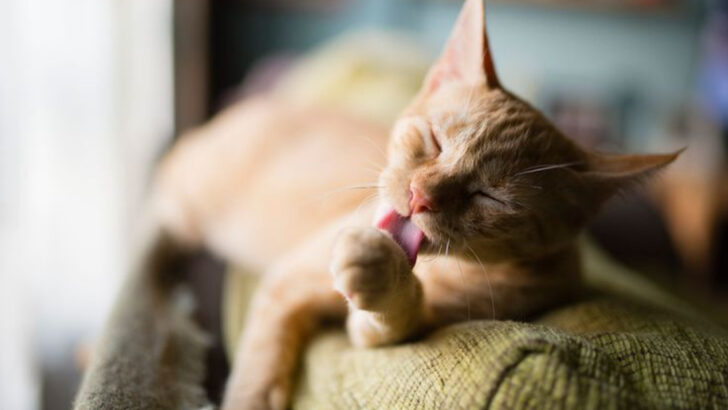They don’t just lick their fur for fun. Grooming is a full-time job, a built-in ritual, and they take it very seriously.
From the moment they wake up to their last pre-nap tongue swipe, cats are constantly polishing, untangling, and perfecting their coats like it’s a red carpet event.
But there’s more to it than vanity. These habits serve a purpose—several, actually. From cooling their bodies to calming their nerves and bonding with their buddies, grooming is a feline superpower in disguise.
This post uncovers 13 fascinating facts behind the fluff, the licking, and the nonstop cleaning sessions that make cats the ultimate self-care icons of the animal world.
The Tongue’s Unique Texture
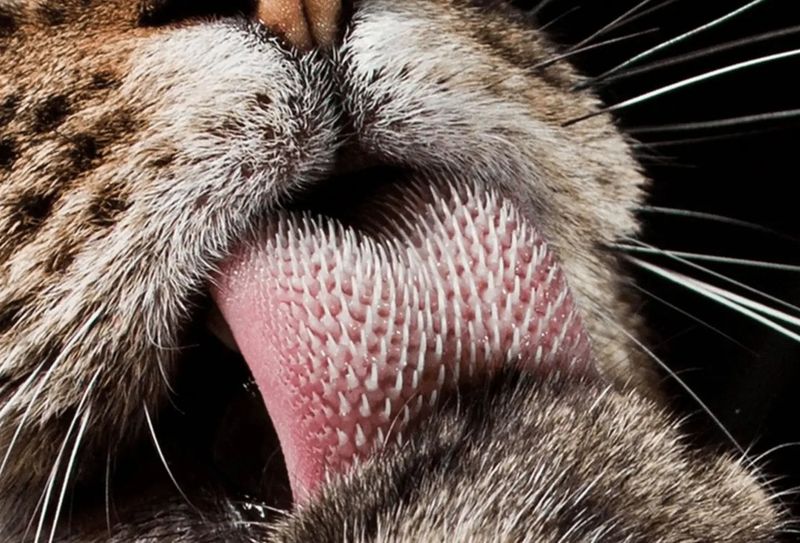
Ever noticed the sandpaper-like feeling of a cat’s tongue? This unique texture is due to tiny, hook-like structures called papillae. These backward-facing hooks are made of keratin, the same material in human fingernails.
Papillae serve multiple purposes; they help cats remove loose fur, debris, and parasites from their coats. This efficient grooming tool is also essential for untangling knots in their fur.
Interestingly, the papillae’s design even helps in food consumption by scraping meat from bones, showcasing nature’s ingenuity in feline anatomy.
Grooming for Temperature Control
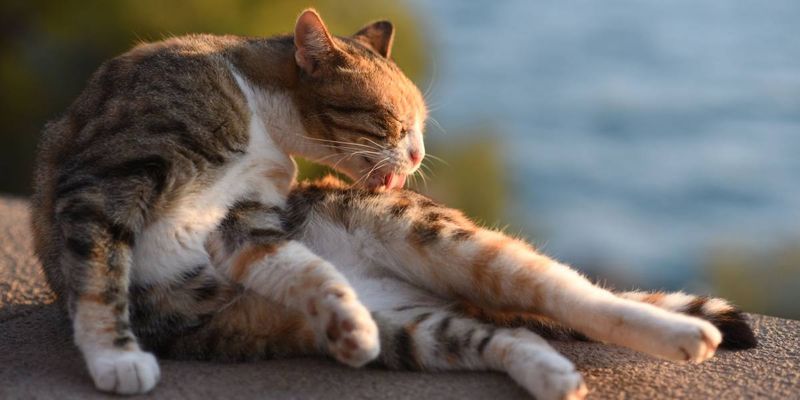
Cats aren’t just cleaning when they’re grooming; they’re also regulating their body temperature. By spreading saliva on their fur, cats cool themselves as the moisture evaporates.
This natural air-conditioning method is crucial, especially for those in warmer climates. Grooming also helps to distribute natural oils, keeping their coat both shiny and waterproof.
These oils serve as insulation, further aiding in temperature regulation. Thus, grooming is both a beauty routine and a vital survival strategy, highlighting its multifaceted role in feline life.
Social Bonding and Grooming
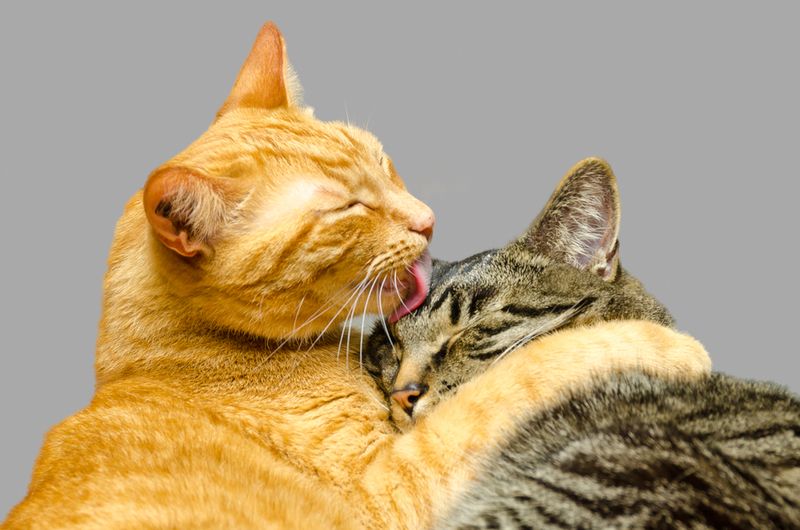
In the feline world, grooming isn’t just about hygiene; it’s a social activity. Cats often groom each other to strengthen bonds, a behavior known as allogrooming.
This mutual grooming helps reduce tension and reinforces social hierarchies. In multi-cat households, it’s common to see cats grooming each other’s heads and necks, areas hard to reach on their own.
These shared moments foster trust and companionship, reflecting the importance of grooming beyond mere cleanliness. It’s a testament to the complex social structures within cat communities.
Self-Soothing Through Grooming

Cats often turn to grooming as a self-soothing mechanism. When stressed or anxious, the rhythmic motion of licking helps them relax and feel secure.
This behavior is akin to meditation for cats, providing a moment of calm in a chaotic world. Grooming releases endorphins, the body’s natural feel-good chemicals, further aiding in relaxation.
This self-care strategy demonstrates the emotional sophistication of cats, who instinctively know how to alleviate their stress. It’s a gentle reminder of the power of routine and self-care in maintaining mental well-being.
Grooming’s Role in Scent Marking
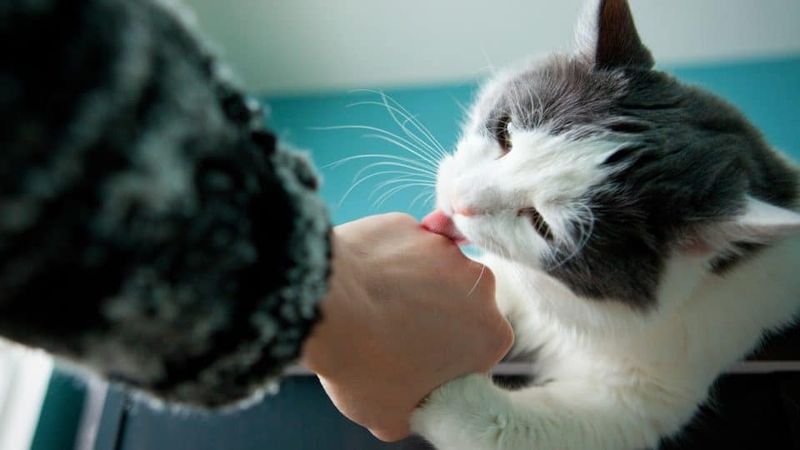
Grooming also plays a role in scent marking, a critical aspect of feline communication. By licking and rubbing, cats spread their unique scent across their body and environment.
This scent is secreted from glands located around their face, paws, and base of the tail. Grooming helps refresh these scents, reinforcing a cat’s territorial claims.
In multi-cat households, this shared scent helps create a sense of unity and belonging among feline members. Scent marking through grooming is a subtle yet effective way cats communicate and establish their presence.
Kittens Learning to Groom
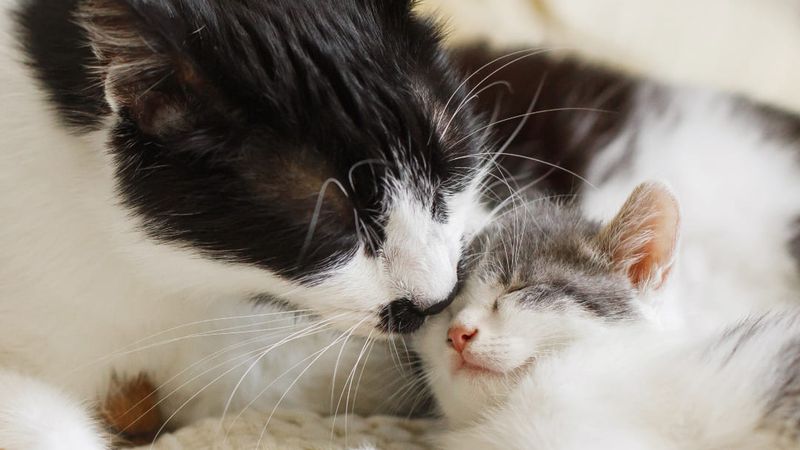
Grooming is a skill learned early in a cat’s life, with mother cats teaching their kittens by example. This essential bonding time helps kittens understand the importance of hygiene.
Mother cats lick their kittens to clean them, stimulate their circulation, and encourage waste elimination. As kittens mature, they mimic these behaviors, developing their grooming routines.
This process is vital for their growth, ensuring they develop into healthy, independent cats. The nurturing aspect of grooming highlights the deep connection between mother and offspring in the feline world.
Grooming and Hairball Formation
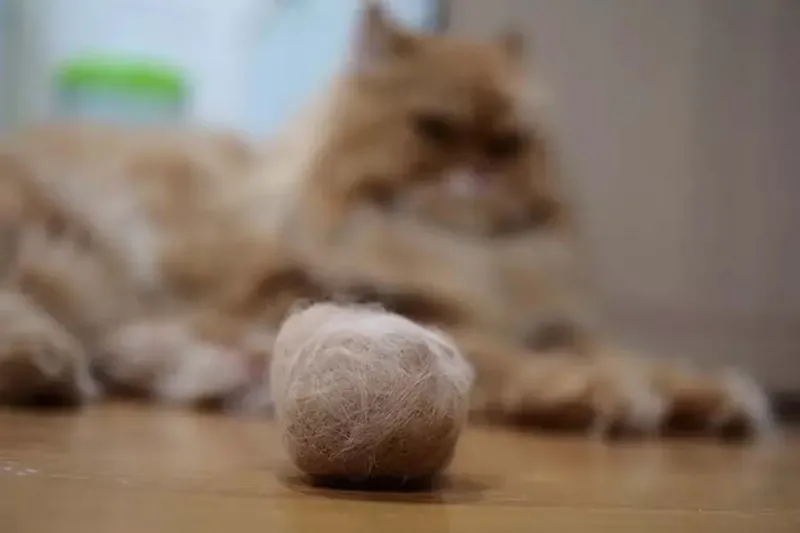
While grooming is generally beneficial, it can lead to the formation of hairballs. As cats groom, they ingest loose fur, which sometimes accumulates in their stomach.
Most hair passes through their digestive system, but some may form hairballs, which the cat eventually expels. This natural process can be distressing to witness but is usually harmless.
Regular grooming and a balanced diet can help minimize hairball occurrences. This aspect of grooming reminds us of the complexities involved in feline self-care, where even beneficial behaviors can have drawbacks.
Different Breeds, Different Grooming Needs
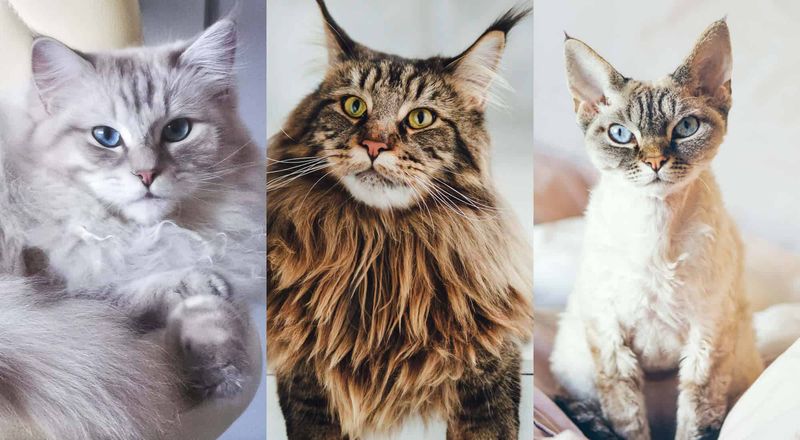
Not all cats have the same grooming requirements. Long-haired breeds like Persians need assistance to prevent matting, while short-haired cats manage with minimal help.
Owners of long-haired cats often need to brush their pets regularly, ensuring their fur stays tangle-free. This grooming routine is an opportunity for bonding, turning a necessity into a cherished ritual.
Conversely, short-haired breeds typically handle grooming themselves but still benefit from occasional brushing. Understanding these differences ensures cats receive the care they need, highlighting the diverse grooming landscapes within the feline world.
The Role of Saliva in Cleaning
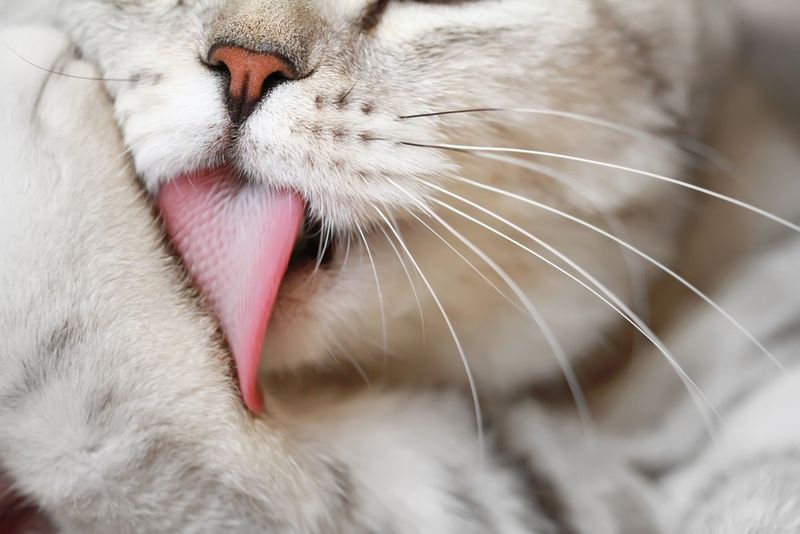
Cat saliva contains natural detergents, making it an effective cleaning agent. This enzymatic property helps break down dirt and debris, assisting in maintaining a pristine coat.
While grooming, cats meticulously lick their fur, ensuring every inch is covered. This attention to detail underlines the thoroughness of their self-care routine.
However, some allergens in cat saliva can cause reactions in sensitive individuals, reminding us of the complex interplay between cats and humans. The multifunctional nature of saliva in cleaning showcases evolution’s role in optimizing feline hygiene practices.
The Evolutionary Perspective on Grooming
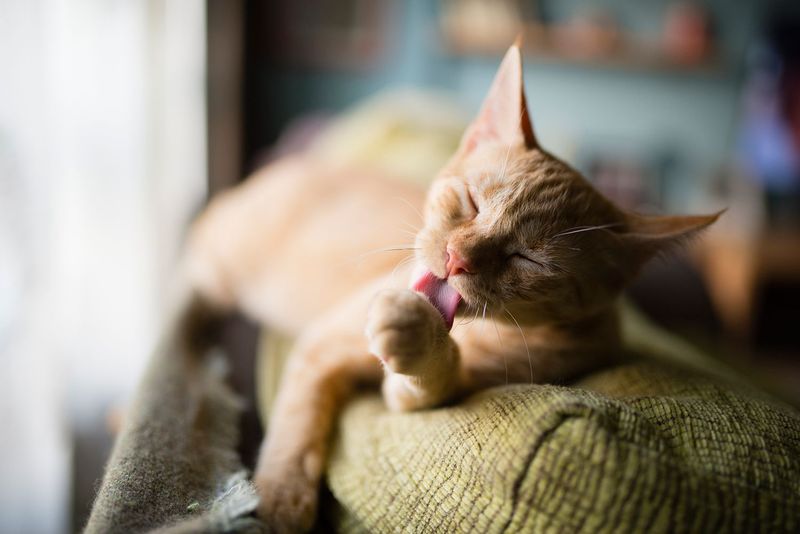
Grooming is not just a domestic cat trait; it’s rooted in their evolutionary history. In the wild, grooming helps remove scents that could attract predators, demonstrating its survival significance.
This behavior also strengthens group cohesion among wild cats, ensuring better cooperation when hunting or defending territory. The evolutionary benefits of grooming have been passed down, reflecting in our domestic cats’ habits.
Through grooming, cats connect with their wild ancestors, maintaining ancient practices that serve functional and social purposes. Understanding this history enriches our view of these elegant creatures and their intricate behaviors.
Health Indicators and Grooming
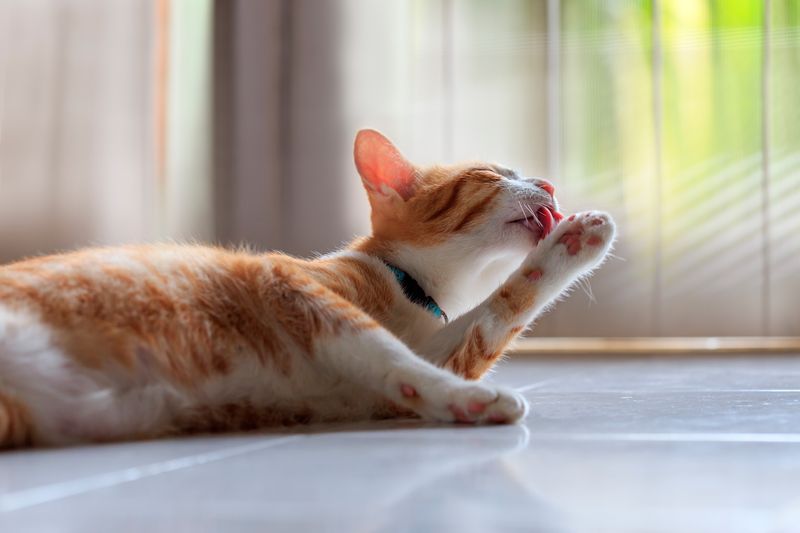
A cat’s grooming habits can signal its health. Healthy cats groom regularly, sporting shiny, smooth coats. Changes in grooming patterns might indicate health issues.
For instance, a cat that suddenly stops grooming could be experiencing pain or illness. On the other hand, excessive grooming might point to stress or skin problems.
Observing these habits can provide early warning signs, enabling timely veterinary intervention. Thus, grooming serves as a valuable health gauge, offering insights into a cat’s well-being beyond mere appearance. It’s a window into their physical and emotional state.
Cultural Views on Cat Grooming
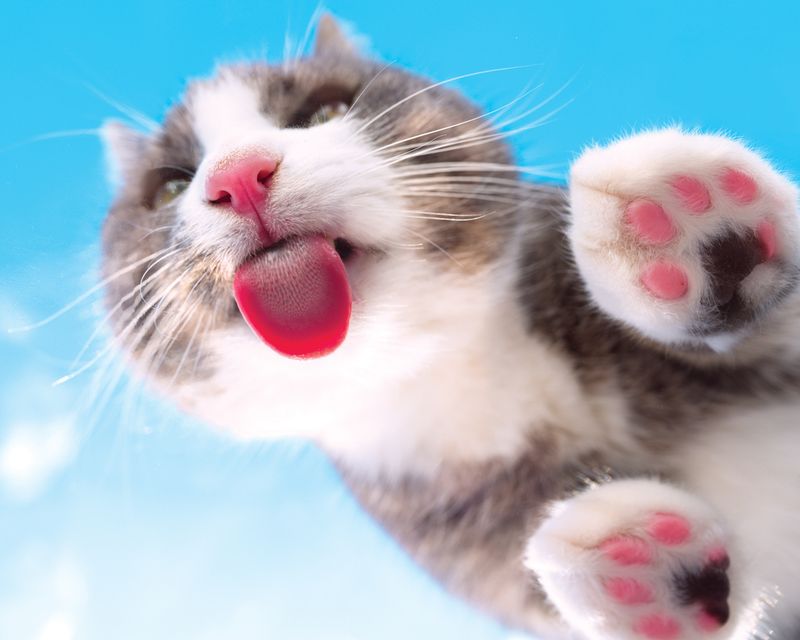
Historically, cats have been admired for their grooming habits. Ancient Egyptians revered cats, associating their cleanliness with divinity and grace.
In many cultures, a clean, well-groomed cat is seen as a symbol of prosperity and good fortune. This admiration has transcended time, with modern pet owners still valuing their cats’ grooming rituals.
Cultural views on grooming reveal our longstanding fascination with these animals, highlighting the enduring appeal of their meticulous nature. This cultural lens enriches our understanding of feline grooming, showing its impact beyond biology and into the realm of human appreciation.
Grooming’s Influence on Human Products
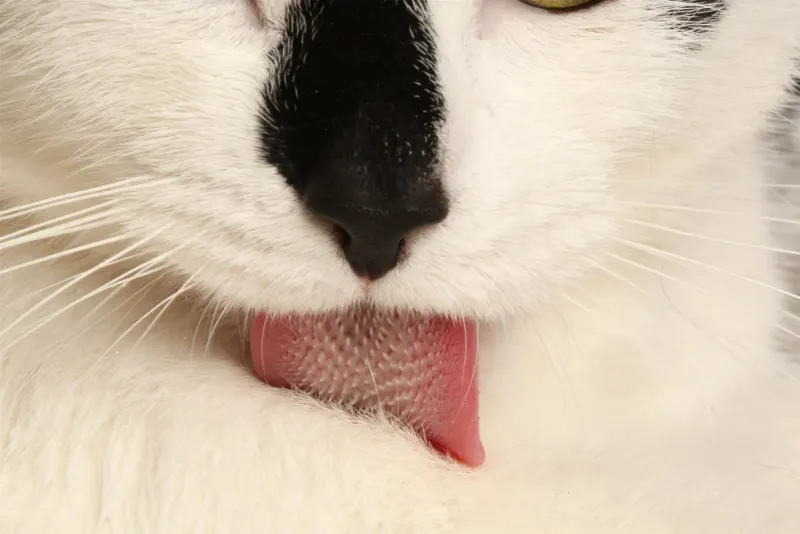
Interestingly, cat grooming behaviors have inspired human products, such as brushes mimicking a cat’s tongue texture. These innovations aim to enhance our bond with cats by allowing us to groom them in a way they find comforting and familiar.
These tongue-like brushes help simulate the sensation cats experience during mutual grooming, strengthening human-pet relationships. This influence exemplifies how observing cats can lead to creative solutions in pet care.
The crossover between feline grooming and human ingenuity highlights the deep connections we form with cats, showcasing our desire to understand and integrate into their world.

